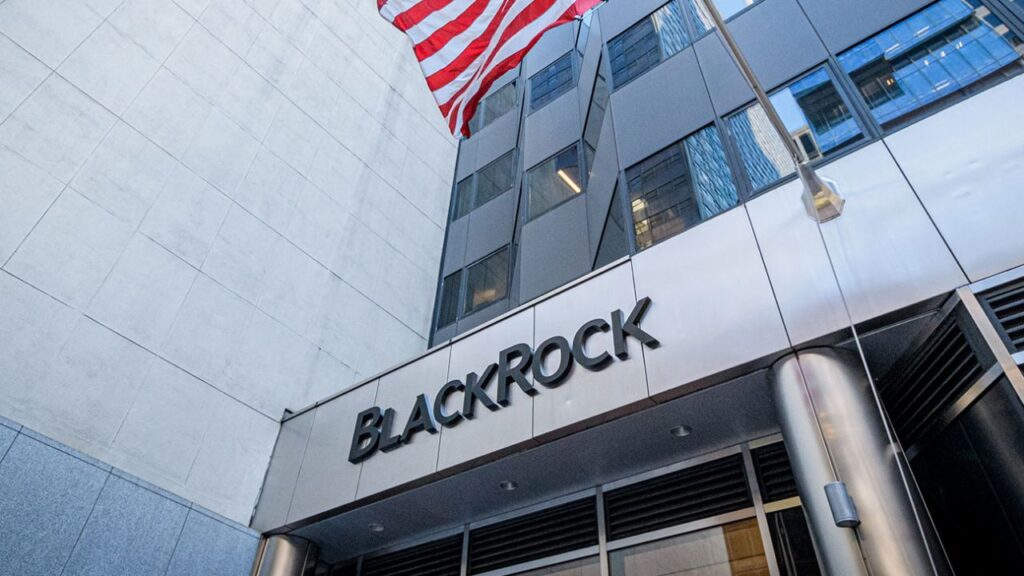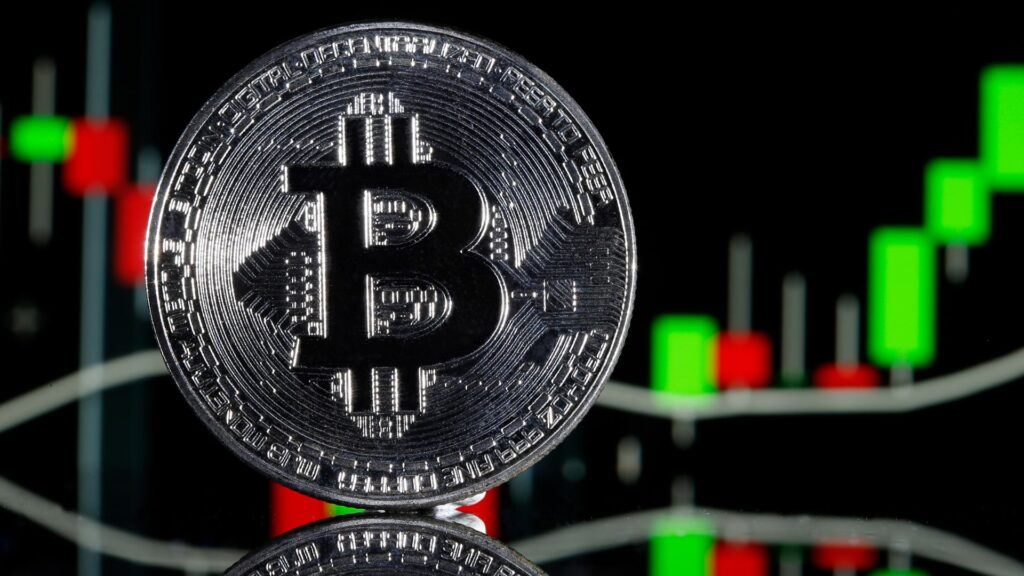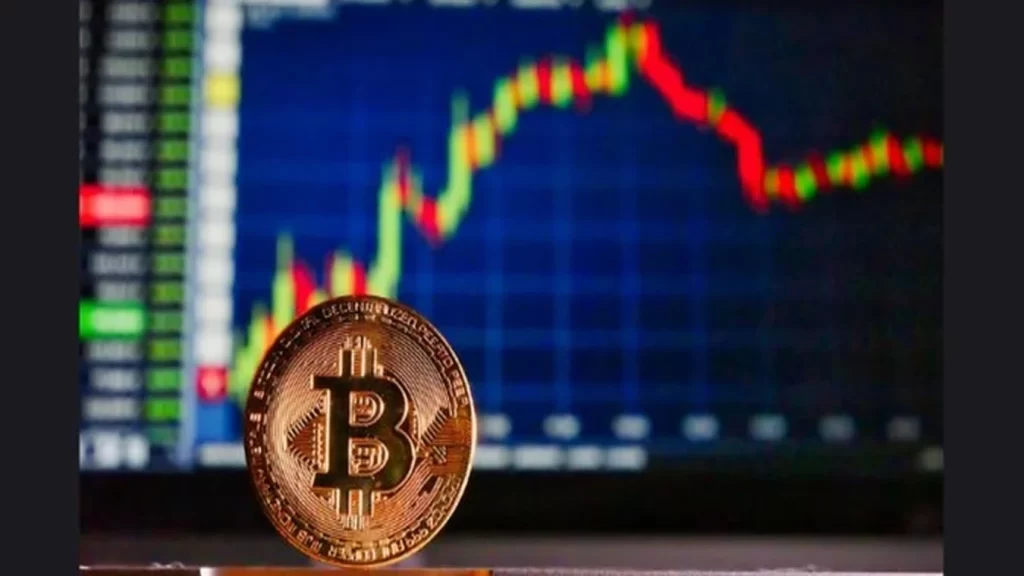Key Takeaways
- Blockchain and Decentralisation Drive Crypto’s Core: Blockchain ensures transparency and trust, while decentralisation empowers individuals and eliminates reliance on central authorities.
- Tokenisation Expands Access: Tokenisation turns traditional assets into digital tokens, increasing liquidity and democratising ownership, enabling broader participation in markets.
- Regulatory Dynamics Shape Adoption: Clear regulations foster trust and attract investment, but overly stringent policies risk stifling innovation, especially in emerging markets.
- Technological Innovations Push Boundaries: Advances in cryptography, smart contracts, and AI are addressing scalability, security, and efficiency challenges, expanding possibilities in the digital economy.
- Crypto Promotes Financial Inclusion: Cryptocurrencies provide access to financial tools for the unbanked, empowering individuals while transforming global workforce dynamics.
- Challenges Remain Critical: Security risks, environmental concerns, and market saturation are ongoing hurdles that require innovative solutions to sustain crypto’s growth.
I’ve always been fascinated by how technology transforms the way we live, and cryptocurrency is one of those innovations that feels like it’s reshaping the future right before our eyes. From decentralised finance to blockchain-powered solutions, the digital economy is evolving at an incredible pace. It’s not just about Bitcoin or Ethereum anymore—it’s about the vast ecosystem driving change across industries.
Understanding the forces behind this dynamic world has been both exciting and eye-opening for me. The blend of technology, economics, and community-driven innovation creates an environment full of potential. Whether it’s the promise of financial inclusion or the push for greater transparency, crypto’s impact is undeniable. Exploring these forces isn’t just about staying informed; it’s about grasping the opportunities and challenges shaping tomorrow.
Analysing The Core Components Of Cryptocurrency
Cryptocurrency operates within an intricate framework that’s both fascinating and transformative. I’ve always found breaking down its core elements helps in making sense of its revolutionary potential.
Understanding Blockchain Technology
Blockchain technology forms the backbone of cryptocurrency. It’s a secure, immutable ledger that records transactions across a distributed network. I’m amazed by how it eliminates intermediaries, ensuring transparency and accountability. Experts, like Andreas Antonopoulos, call it the “internet of money” for good reason.
Each block contains data, a timestamp, and a cryptographic hash. This structure ensures that altering data in one block would require changing all subsequent blocks. It fosters trust, especially in a decentralised system where no central authority exists. Its robustness excites me.
Transactions are verified using consensus mechanisms like Proof of Work or Proof of Stake. The absence of centralised verification speeds up processes and reduces costs. Blockchain, beyond finance, impacts healthcare, supply chains, and even voting systems.
Role Of Decentralisation In Cryptocurrencies
Decentralisation defines cryptocurrencies and differentiates them from traditional currencies. By distributing control across a global network, it removes reliance on central authorities. I’ve seen how this feature empowers individuals in regions with unstable economies.
Nodes within the network validate transactions, preventing centralised control or censorship. Vitalik Buterin describes decentralisation as “a key to resistance against systemic corruption.” This aligns with cryptocurrency’s foundational ethos of financial sovereignty.
Users hold private keys, ensuring only they control their funds. Peer-to-peer transactions reduce inefficiencies, increasing inclusivity. I believe decentralisation drives trust, making cryptocurrencies attractive to those seeking alternatives to traditional banking.
Examining Tokenisation And Crypto Assets
Tokenisation transforms real-world assets into digital tokens on a blockchain. Each token represents ownership or usage rights, enhancing liquidity and accessibility. I’m intrigued by how it democratises ownership, allowing smaller investors to participate in high-value assets.
Crypto assets can be utility tokens, security tokens, or non-fungible tokens (NFTs). Utility tokens power ecosystems, while security tokens represent investments. NFTs are unique and bring digital art and collectibles into mainstream markets. This diversity is thrilling.
Tokenisation ensures transparency through blockchain-based verification. Regulators like the FCA are moving to clarify frameworks, which could spur adoption. I view crypto assets as symbols of the paradigm shift in how we perceive, trade, and store value.
Exploring Market Trends Shaping Cryptocurrency
Cryptocurrencies are evolving rapidly, bringing fresh opportunities and challenges. With dynamic forces influencing the market, it’s clear that understanding key trends is crucial to navigating this digital economy effectively.
Volatility And Price Mechanics
Price volatility defines the crypto market, driven by speculators, investor sentiment, and rapid news cycles. I’ve noticed that significant events, like regulatory announcements or technological updates, can cause sharp price swings. Supply mechanics also play a crucial role. Cryptos like Bitcoin, with a capped supply of 21 million, exhibit scarcity value, amplifying demand during market upswings. Low liquidity often exacerbates volatility, especially for emerging altcoins.
Adoption By Businesses And Consumers
Business and consumer adoption is redefining cryptocurrencies’ practical uses. I’ve seen global firms like Tesla accept Bitcoin for payments, showcasing their legitimacy. Payment networks such as Visa and Mastercard are integrating crypto transactions, simplifying cross-border payments. Consumers are also warming to using crypto-backed cards for everyday purchases. DeFi platforms allow earning and borrowing, making crypto an economic alternative. These examples highlight growing trust in crypto products.
Key Investment Trends In The Crypto Space
Investment trends in crypto have shifted towards institutional participation. According to Bloomberg, over £40 billion flowed into crypto hedge funds and ETFs in 2023 alone. I’ve personally observed rising interest in utility-driven projects like Ethereum Layer-2 solutions, reducing transaction costs. NFTs and metaverse assets are gaining traction, offering new digital ownership pathways. Staking and earning opportunities through Proof-of-Stake networks also attract a growing investor base.
Investigating Regulatory And Legal Dynamics
Governments and agencies are continually shaping the regulatory landscape for cryptocurrencies. I find this part of the digital economy fascinating, as it establishes how innovation and governance coexist.
Government Policies Across The Globe
Global regulatory efforts aim for consistency to protect investors and economies. The IMF has stressed the importance of coordinated frameworks, warning against naming crypto as legal tender due to risks for emerging markets. I think these moves balance innovation with financial stability.
In countries like Japan and Switzerland, regulators classify cryptocurrencies distinctly to integrate them within their financial systems. Meanwhile, India and China continue imposing strict bans, focusing on reducing risks like illicit financing. These varying stances define the global crypto policies today.
Challenges Of Compliance And Legal Frameworks
Crypto firms face challenges adapting to diverse regulations worldwide. Regular shifts in the legal framework demand constant re-evaluation of compliance strategies. I often hear industry leaders expressing frustration over uncertainties in enforcement, especially across borders.
Regulators like the SEC and CFTC in the US have differing views on crypto as securities or commodities. This overlapping jurisdiction adds layers of complexity for innovation. Trustworthy industry voices, like Coinbase’s CEO, advocate clearer rules for fostering growth.
Impact Of Regulations On Crypto Adoption
I think regulations play a key role in mainstream crypto adoption. Clarity in rules encourages institutional investors while reducing market volatility. For example, US guidelines have attracted firms looking to legitimise crypto operations within a safe, regulated framework.
However, excess restrictions could stifle innovation. Emerging economies rely on crypto for financial inclusion but risk exclusion due to heavy-handed policies. Striking the right balance can create trust, enabling more users to embrace crypto securely and confidently.
Understanding Technological Innovations In Crypto
Technological advances in the crypto space are reshaping the digital economy. I find it fascinating how these developments are addressing challenges like scalability and expanding possibilities for decentralised finance (DeFi) and blockchain networking.
Emerging Cryptographic Protocols
Cryptographic protocols ensure secure, efficient communication in blockchain systems. Zero-knowledge proofs, for example, let parties verify transactions without revealing sensitive data. Innovations in quantum-resistant algorithms are also emerging to counter future threats from quantum computing. Chainlink’s verifiable random function (VRF) stands out for generating tamper-proof randomness in blockchain processes.
Role Of AI And Machine Learning In Crypto
AI and machine learning are transforming crypto trading and security. Algorithms predict price trends, enabling data-driven decisions. I’ve seen machine learning help prevent fraud by detecting unusual transaction patterns. AI also optimises blockchain management by automating tasks like resource allocation. OpenAI’s insights on blockchain scalability showcase AI’s potential in improving decentralised networks.
Advancements In Smart Contracts And DeFi
Smart contracts have taken digital agreements to the next level. Platforms like Ethereum and Solana enable programmable agreements that execute automatically. DeFi boosts financial inclusion through innovations like yield farming and decentralised lending. High-level automation in protocols like Aave has impressed me with its efficiency in offering secure, accessible, and interest-based crypto loans.
Social And Cultural Impacts Of Cryptocurrency
Cryptocurrencies are reshaping societies and challenging cultural norms. They empower individuals, promote global inclusion, and redefine value exchange in the digital age.
Democratising Finance For The Unbanked
Cryptocurrencies open access to financial tools for people without bank accounts. Over 1.4 billion adults globally remain unbanked, according to the World Bank. With just an internet connection, anyone can send or receive money, borrow, or save. This fosters inclusion and economic participation.
Blockchain-based microloans are transforming lives in developing countries. Platforms like Celo let users access lending markets without credit histories. This bypasses traditional institutions, offering hope to those once excluded. I see this as a powerful force for empowerment.
The Influence Of Cryptocurrencies On Workforce Dynamics
Cryptocurrencies are altering workforce structures by introducing borderless payments. Freelancers now secure payments in Bitcoin or Ethereum, cutting delays from traditional transfers. This flexibility encourages cross-border collaboration, especially for remote workers.
Start-ups in the blockchain space are thriving. Many hire employees through token compensation schemes instead of salaries, aligning interests. I’ve noticed friends joining crypto firms because they value transparency and shared growth potential. It’s a revolutionary change.
Crypto Communities And Global Collaboration
Crypto communities unite people across countries, fostering innovation. Decentralised Autonomous Organisations (DAOs) like MakerDAO govern assets globally, enabling democratic participation. Leaders like Vitalik Buterin cite them as crypto’s cultural backbone.
Social media amplifies collaboration among enthusiasts. Platforms like Twitter and Reddit host thriving crypto discussions. From coding to marketing ideas, these communities build ecosystems together. I feel inspired witnessing this collective, borderless teamwork grow.
Challenges And Risks In The Crypto Economy
The crypto economy has brought significant opportunities, but it isn’t without its challenges. From security issues to environmental concerns, these risks must be addressed to sustain its evolution.
Addressing Security Threats And Fraud
Security issues are a major worry in the crypto market. Crypto Ponzi schemes, ICO scams, and thefts often target inexperienced investors. I’ve seen friends fall victim to phishing attacks, losing their funds. Experts recommend using hardware wallets and two-factor authentication for protection. Transparency in transactions and blockchain tracking tools, like CipherTrace, can help authorities tackle money laundering and fraud effectively.
Navigating Environmental Concerns Of Mining
Crypto mining’s energy consumption harms the environment. Bitcoin alone uses more energy annually than some countries. I know developers shifting to Proof-of-Stake systems to reduce energy needs, like Ethereum did. Renewable energy sources could make mining sustainable. Reports suggest miners are exploring green solutions, cutting emissions in the process. Governments are also scrutinising environmental impacts to encourage eco-friendly crypto practices.
Managing The Impact Of Market Saturation
The growing number of cryptocurrencies has led to market saturation. Over 10,000 tokens now compete for investor attention, diluting value and confusing users. I’ve invested in lesser-known coins only to see poor returns. Experts often advise focusing on projects with strong use cases. Decentralised finance (DeFi) and established tokens offer better stability. Staying informed is key to avoiding unreliable or short-lived crypto projects.
Conclusion: Navigating The Future Of The Digital Economy
The crypto landscape is evolving at a breathtaking pace, reshaping how we perceive value, ownership, and financial systems. It’s clear that cryptocurrencies and blockchain technology hold immense potential to drive transparency, inclusion, and innovation across industries.
As we navigate this dynamic space, balancing technological advancements with regulatory clarity will be essential to unlocking its full potential. By embracing the opportunities while addressing the challenges, we can foster a digital economy that’s more equitable, efficient, and sustainable for everyone.
The journey ahead is both exciting and complex, but with the right focus, the transformative power of cryptocurrency can truly redefine our global economy.
Key Takeaways
- The next wave of cryptocurrency innovation is driving advancements in decentralised finance (DeFi), blockchain scalability, and digital ownership through NFTs.
- Blockchain technology, the backbone of cryptocurrencies, is enabling secure, transparent, and versatile applications across industries beyond finance, such as supply chain, healthcare, and energy.
- Emerging trends like stablecoins, Central Bank Digital Currencies (CBDCs), and quantum computing highlight the ongoing evolution of digital currencies, balancing scalability, security, and regulation.
- Start-ups and projects like StarkWare, FalconX, and BitQuery are pushing the boundaries of crypto adoption, focusing on solutions such as scalability, institutional investment, and blockchain data accessibility.
- Challenges such as regulatory hurdles, privacy concerns, and environmental impacts of mining are prompting the crypto community to develop innovative solutions like proof-of-stake (PoS) systems and privacy-preserving technologies.
- The future of crypto frontiers promises global adoption of blockchain for cross-border payments, financial inclusion, and investor opportunities, fostering a transformative impact on finance and other industries.
I’ve always been fascinated by how rapidly the world of digital currency evolves. What started as a niche concept with Bitcoin has now transformed into a global movement, reshaping how we think about money, technology, and even trust. Every new development feels like stepping into uncharted territory, full of opportunities and potential to redefine the future.
The next wave of innovation in cryptocurrency is particularly exciting. From decentralised finance (DeFi) to blockchain-powered solutions that go beyond currency, it’s clear we’re only scratching the surface of what’s possible. I’m constantly amazed by the creativity and ambition driving this space, and it’s hard not to feel inspired by the endless possibilities ahead.
Understanding Crypto Frontiers: A New Era of Digital Currency
Exploring crypto frontiers feels like witnessing the dawn of something extraordinary. This new wave of digital currency innovation shows us how technology and finance continue to merge in ways we couldn’t have imagined.
The Evolution of Cryptocurrencies
Cryptocurrencies have come a long way since Bitcoin was introduced in 2009. Bitcoin started as a bold idea for decentralised money, but it paved the way for thousands of new tokens. These innovations include Ethereum’s smart contracts and Solana’s scalable blockchain.
Every step has added functionality and reach, moving from simple transactional uses to complex systems like decentralised finance (DeFi). Ripple, for example, focuses on cross-border payments, which highlights how cryptocurrencies improve real-world financial inefficiencies.
Emerging crypto networks redefine user interaction and participation. I’ve seen how non-fungible tokens (NFTs) transformed digital ownership, and it’s clear that the evolution of cryptocurrencies is far from over. Each iteration solves unique problems and expands global adoption.
Importance of Innovation in Digital Currencies
Innovation drives every cryptocurrency breakthrough. Without it, cryptos like Ethereum’s smart contracts and Chainlink’s oracles wouldn’t exist. These new ideas turn once-impossible visions, including decentralised apps, into reality.
Digital currencies are not limited by borders or traditional systems. Stablecoins, for instance, provide price stability paired with the speed of crypto transactions. This allows individuals in regions with volatile currencies to protect their assets effectively.
The ongoing exploration of decentralised financial platforms excites me. DeFi protocols make borrowing and lending accessible without intermediaries. That sense of empowerment for users makes innovation vital in shaping the future of finance and its equitable accessibility.
The Role of Blockchain Technology
Blockchain technology is the backbone of cryptocurrencies. Its transparent, tamper-proof system enables decentralisation and trustless transactions. Public blockchains like Bitcoin and Ethereum store data securely and ensure that records remain immutable.
I’ve always admired blockchain’s potential beyond financial systems. It’s used to track supply chains for fair trade products, verify records in healthcare, and even enable green energy trading. The versatility it offers is truly unmatched.
Experts like Vitalik Buterin, Ethereum’s co-founder, often stress how blockchain tech fosters collaboration. The open ecosystem it creates allows developers worldwide to experiment and deploy transformative solutions. Every industry is a potential new frontier.
Examining Emerging Trends in Crypto Innovations
Decentralised Finance (DeFi) Revolution
DeFi continues to redefine financial systems by removing intermediaries. I’ve seen DeFi platforms offer seamless asset transfers, with lower fees and more control. The composability of DeFi allows innovative tools like yield farming and liquidity pools to thrive, unlocking unique earning potential. Integration with traditional finance (TradFi) is bridging the gap, creating hybrid solutions that could reshape banking. According to experts, the DeFi market surpassed $50 billion in total value locked by late 2023, showing its rapid adoption and trust among users.
Adoption of Stablecoins and Central Bank Digital Currencies
Stablecoins provide price stability, addressing crypto’s volatility issues. I’ve noticed how they’re increasingly used in cross-border transactions, ensuring faster and cheaper payments. Governments are exploring Central Bank Digital Currencies (CBDCs), paving the way for regulated digital economies. China’s digital yuan trials and Europe’s evolving CBDC plans show global interest. Experts like Christine Lagarde suggest CBDCs could empower economic inclusion while enhancing transaction transparency and security — both crucial for modern money systems.
Rise of Non-Fungible Tokens (NFTs) and Digital Ownership
NFTs transform asset ownership, making digital arts and collectibles more valuable. I remember seeing the excitement when artists began minting multimillion-dollar NFTs, exemplified by Beeple’s $69 million sale. Beyond art, they create new opportunities in gaming, real estate, and intellectual property. Platforms like OpenSea are seeing increased activity as these assets diversify. Blockchain ensures full ownership and authenticity, addressing concerns around counterfeit digital goods. Experts predict NFTs will play a big role in shaping the metaverse economy.
Exploring Emerging Technologies Shaping Crypto Frontiers
Emerging technologies are revolutionising the cryptocurrency landscape. These developments promise to enhance security, scalability, and usability. I’m genuinely excited to witness their immense potential driving the next wave of innovation in digital currency.
Integration of Artificial Intelligence in Cryptocurrencies
AI is transforming blockchain ecosystems by boosting security and efficiency. AI-powered smart contracts automate processes, reducing errors. Fraud detection benefits from machine learning models that analyse data instantly. With these tools, trading decisions are more accurate than ever.
AI crypto coins simplify decision-making using predictive analytics. They gather and interpret diverse data to optimise strategies. I find the use of AI in blockchain thrilling, especially its role in preventing fraudulent activities through features such as biometric transaction authentication.
Quantum Computing’s Impact on Blockchain Security
Quantum computing presents challenges and solutions for blockchain security. While it threatens encryption standards, quantum-resistant algorithms offer robust defence. Experts like Scott Aaronson highlight the industry’s proactive measures to counter quantum risks effectively.
Quantum power improves transaction speeds and decentralisation. I’m inspired by innovations tackling threats posed to private keys. This blend of caution and ingenuity ensures blockchain continues providing secure, decentralised solutions against evolving computational capabilities.
Scalability Solutions and Layer-2 Technologies
Scalability remains a core focus in crypto innovation. Layer-2 technologies, like Lightning Network and Optimistic Rollups, offload activities to accelerate transactions. These solutions reduce congestion, offering cost-efficient operations. Ethereum’s initiatives are remarkable examples.
I appreciate Layer-2 advancements for enhancing network reliability and inclusivity. Affordable, faster digital transactions improve user experiences. Exploring scalability breakthroughs like these reaffirms my confidence in blockchain’s potential to replace traditional systems.
Highlighting Promising Start-Ups and Projects in the Crypto Space
Innovative Start-ups Driving Crypto Evolution
StarkWare is redefining blockchain scalability. With their StarkEx and StarkNet systems, they’re solving network congestion and boosting transaction speed. I find their use of advanced mathematics inspiring. This could pave the way for more efficient blockchain adoption.
FalconX leads the way for institutional crypto adoption. Their trading tools, analytics, and secure services cater to big investors. What I admire is their 2025 goal to expand partnerships for crypto payments, taking digital currencies into mainstream finance. It’s an exciting prospect.
BitQuery transforms blockchain data accessibility. Set up in 2019, they offer reliable tools to explore blockchain networks. Their focus on simplifying blockchain data is something I value greatly. Tools like theirs are critical for expanding the crypto space insightfully.
Prominent Crypto Projects to Watch in 2025
FalconX’s 2025 expansion excites me. Their step towards integrating crypto into regular payment systems showcases digital money’s future. Their partnerships could bridge traditional finance and blockchain, making the two worlds work seamlessly together.
StarkWare continues to impress me with StarkNet. This project focuses on Layer-2 scalability to deliver faster, more cost-effective blockchain transactions. I truly believe such innovations are key to supporting a growing number of applications in the space.
BitQuery can reshape how we understand blockchain networks. Their unique systems could streamline processes like auditing and development, which are in high demand. They’re positioned perfectly to meet the growing need for robust blockchain data solutions.
Success Stories of Emerging Crypto Ventures
StarkWare’s StarkEx system already powers popular Ethereum-based platforms. I’ve read how their tech ensures faster operations without compromising decentralisation. Their success shows how technical breakthroughs matter for scaling blockchain’s potential.
FalconX serves top institutional investors in 30+ countries. What stands out to me is their expanding client list, including leading banks and hedge funds. Their secure crypto-market services show how trust can drive widespread blockchain adoption.
BitQuery has successfully made blockchain analytics simpler for businesses. I admire their expanding presence in crypto compliance tools. Their partnerships with industry leaders prove their expertise and the growing appreciation for quality blockchain data.
Addressing Challenges in Crypto Innovation
Innovation in cryptocurrency brings exciting opportunities, but it also faces significant challenges. These hurdles can determine the pace of adoption and evolution. I’ve seen how addressing these challenges fosters progress and builds trust in this emerging frontier.
Regulatory Hurdles and Compliance
Regulatory uncertainty hinders crypto innovation, with governments taking diverse approaches. In the US, pro-crypto figures are driving policy changes. The European Union’s MiCA regulation aims to create stability. Meanwhile, China and India focus more on CBDCs than crypto adoption.
Countries like Japan and South Korea promote blockchain innovation through protective policies. These enable consumer safety while encouraging creativity. Clear regulatory frameworks inspire more companies to explore blockchain without fear of penalties.
I’ve noticed how clarity in crypto laws encourages innovation. When startups know the rules, they can focus on building solutions instead of navigating regulatory grey areas. Transparent policies help everyone understand their rights and responsibilities.
Balancing Privacy and Transparency in Blockchain
Blockchain is crucial for transparency but raises privacy issues. Public ledgers expose transaction details, which could compromise user confidentiality. Some innovators use zero-knowledge proofs to address this, balancing data visibility with secure private transactions.
Regulating privacy in blockchains seems challenging. Governments want to monitor activity while protecting user identities. I’ve discussed this with blockchain experts who believe in designing hybrid models that satisfy legal and personal privacy demands.
I’m inspired by how developers push for encrypted solutions that don’t compromise transparency. Privacy-preserving technologies, like zk-SNARKs, show how innovation can respect regulations while maintaining individual security on-chain.
Environmental Impact of Cryptocurrency Mining
Crypto mining consumes enormous energy, causing environmental concerns. Bitcoin mining alone uses as much energy as certain small nations. Renewable energy adoption is growing, with some miners relocating to hydro or solar power regions to reduce their carbon emissions.
Proof-of-stake (PoS) systems address this issue. They replace the energy-intensive proof-of-work model, cutting the need for vast computational resources. Ethereum’s transition to PoS saved substantial energy, setting a remarkable standard for sustainable blockchain practices.
I’ve admired projects that build eco-friendly mining methods. Green mining expansions using excess power or natural energy reflect how environmentalism blends with tech. The shift demonstrates that sustainability can align with crypto growth objectives effectively.
The Future of Crypto Frontiers and Its Global Implications
Predictions on Market Expansion and Adoption
Cryptocurrency adoption is expected to grow rapidly. By 2030, analysts predict the global crypto market could reach a valuation of over $11 trillion. Nations like El Salvador have already embraced Bitcoin as legal tender, and I find it inspiring to see blockchain technology creating new economic opportunities.
Decentralised finance should boost accessibility in underserved regions. For instance, in areas lacking traditional banking, mobile blockchain solutions enable citizens to transact globally. I’ve observed how projects like Stellar connect unbanked populations to the financial system.
Businesses are increasingly adopting blockchain for secure transactions. Companies like IBM and Microsoft are prioritising blockchain as a transformative tool. Seeing corporates embrace crypto for efficiency and trust reassures me about its potential mainstream integration.
Insights into Cross-Border Payments and Accessibility
Blockchain is revolutionising cross-border payments with speed and low fees. Ripple’s XRP cuts transaction times to seconds, far outpacing traditional systems like SWIFT. I’ve seen how this provides much-needed solutions for workers remitting money home, reducing transfer delays.
Cryptocurrencies improve access to people in inflation-hit regions. Stablecoins like USDC ensure users retain purchasing power when local currencies fall. I consider this a game-changer for financial security in unstable economies. Reports show usage soaring across regions like Africa.
Blockchain also supports peer-to-peer lending without intermediaries. Platforms like Aave enable direct borrowing, making capital accessible to entrepreneurs not served by banks. Witnessing blockchain’s role in funding innovations excites me about its growing potential to empower others.
Opportunities for Investors and Innovators
Crypto offers boundless opportunities for bold innovations. Platforms such as Ethereum have enabled thousands of decentralised applications, from gaming to DeFi. I’ve admired how developers are constantly building tools that solve real-world issues and drive transformative change.
Investors are diversifying portfolios with crypto assets. Reports show institutions such as BlackRock exploring crypto investments, lending legitimacy to the sector. It’s thrilling to watch blockchain earn trust and create wealth across industries. Early adopters have reaped substantial benefits.
Start-ups are leveraging blockchain’s transparency for industries beyond finance. Supply chain firms like VeChain ensure traceable goods. From healthcare to energy solutions, blockchain is growing into a universal tool. I feel a growing sense of optimism for the breadth of possibilities.
Conclusion
The world of cryptocurrency is advancing at an astonishing pace, fuelled by innovation and a collective drive to redefine financial systems. From decentralised finance to blockchain-powered solutions, the possibilities seem limitless. This is more than just a technological evolution; it’s a movement reshaping industries and empowering individuals globally.
As we stand on the brink of this next wave of digital currency innovation, I believe the opportunities for growth, collaboration, and transformation are immense. By embracing creativity, sustainability, and inclusivity, the crypto space can unlock unprecedented potential. The journey ahead promises to be as exciting as it is transformative.
Global asset management giant BlackRock has launched a new Bitcoin exchange-traded product (ETP) in Europe, marking its first crypto-linked offering outside North America. This move follows the success of its US-listed iShares Bitcoin Trust (IBIT), which has accumulated $50.6 billion in assets under management.
According to Bloomberg, the new iShares Bitcoin ETP will trade under the ticker IB1T on Xetra and Euronext Paris, while it will be listed as BTCN on Euronext Amsterdam.
Competitive Pricing and Market Expansion
To attract investors, BlackRock has introduced a temporary fee waiver of 10 basis points, reducing the fund’s expense ratio to 0.15% until the end of the year. The expansion into Europe is driven by increasing retail and institutional demand, according to Manuela Sperandeo, BlackRock’s head of iShares Product for Europe and the Middle East.
While Europe already has over 160 crypto ETPs, the market remains smaller than in the US. Bloomberg ETF analyst Eric Balchunas noted that despite their recent introduction, US spot Bitcoin ETFs control around 91% of the global market due to lower costs and higher liquidity.
Market Potential and Investor Sentiment
If BlackRock can replicate its US success in Europe, significant market growth is possible. However, Balchunas highlighted that European investors tend to have lower risk tolerance than their counterparts in the US and certain parts of Asia.
Key Takeaways
- Blockchain technology has evolved beyond cryptocurrencies, offering secure, transparent, and efficient solutions across industries like finance, healthcare, and art.
- Key features of blockchain include decentralisation, immutability, transparency, and cryptographic security, making it a robust foundation for innovation.
- Decentralised Finance (DeFi) and smart contracts are revolutionising traditional systems by enabling peer-to-peer transactions and automating processes.
- Blockchain integration in areas like supply chains, identity management, and NFT-based art is driving real-world applications and empowering creators.
- For businesses, blockchain reduces costs, enhances trust through transparency, and streamlines operations via smart contracts and tamper-proof records.
- Although scalability and regulatory challenges remain, solutions like Proof of Stake and innovative dapps are paving the way for broader adoption.
I’ve always been fascinated by how quickly technology evolves, and blockchain is one of those breakthroughs that feels like it’s reshaping the world in real time. What started as the backbone of cryptocurrencies has grown into something much bigger, driving innovation across industries like finance, healthcare, and even art. It’s not just about digital currencies anymore—it’s about creating systems that are more transparent, secure, and efficient.
The beauty of blockchain lies in its ability to solve real-world problems while opening doors to endless possibilities. Every time I explore its potential, I’m struck by how it empowers individuals and businesses alike. From decentralised finance to smart contracts, the technology is fuelling a new wave of creativity and opportunity. It’s not just a trend; it’s the foundation for the future of innovation, and I’m excited to see where it takes us next.
Understanding The Blockchain Advantage
Blockchain has proven to be a transformative force across industries. Its unique structure powers innovations, particularly in the crypto space, by offering unparalleled security, transparency, and efficiency.
What Is Blockchain Technology?
Blockchain is a decentralised digital ledger. It records transactions across multiple systems to ensure data transparency and security. I see it as a chain of blocks, each storing data and protected by cryptographic standards. This structure eliminates reliance on intermediaries. For me, it’s what makes blockchain revolutionary. A shared system fosters trust by allowing all participants to validate information.
Key Features of Blockchain Innovation
Decentralisation stands out as blockchain’s core. I love how it removes central control and ensures fair access. Immutability enhances trust since tampering with records is nearly impossible. Transparency ensures that all activities are visible across the network. Moreover, its high security through cryptography gives me confidence in its reliability. Efficiency and cost reduction make blockchain crucial for modern systems, changing how businesses operate globally.
Why Blockchain Is Essential for Cryptocurrencies
Blockchain creates the backbone of cryptocurrencies. It validates and records every crypto transaction securely. I appreciate how it ensures trust through decentralised protocols, eliminating fraud risks. Tokens like Bitcoin rely on blockchain for immutability and transparency. Experts value its role in cutting costs and automating processes. This synergy also supports smart contracts, enabling real-world applications and growth for digital assets.
Exploring The Next Wave of Crypto Innovation
Blockchain technology is driving a transformative era in the crypto space. From decentralising finance to revolutionising contracts and embedding itself in daily life, it’s reshaping innovation. Here’s how it’s steering the future.
The Rise of Decentralised Finance (DeFi)
DeFi is revolutionising finance by eliminating intermediaries. It relies on blockchain and smart contracts to enable peer-to-peer loans, payments, and trading. I find its permissionless nature, especially on Ethereum, empowering as it allows anyone to access these services without restrictions.
DeFi enables rapid innovation through decentralised applications (dapps). These applications provide complex financial solutions like decentralised exchanges and lending protocols. I’m particularly inspired by platforms like Uniswap and Aave, which are simplifying access to financial tools for users globally.
Evolution of Blockchain in Smart Contracts
Smart contracts automate contract execution without human intervention. I see these as game-changers, especially in areas like real estate and supply chain management. These contracts, built on blockchains like Ethereum, execute securely and transparently when predefined conditions are met.
They reduce errors, processing time, and costs, especially for industries overwhelmed by manual processes. I’ve seen how businesses implement these to streamline operations. Experts highlight their potential to disrupt traditional industries by fostering innovation and enhancing efficiency.
Integration of Blockchain in Everyday Applications
Blockchain is moving beyond finance into everyday areas. It powers healthcare records, secures identity management, and enhances product traceability. I’ve observed how supply chain transparency built through blockchain tech strengthens trust between businesses and consumers.
Blockchain’s use cases in art, through NFTs, are fascinating. This technology lets creators monetise work directly via blockchain-based marketplaces. Experts regard NFTs as pivotal in redefining ownership and copyright, which I find inspiring as a tool to empower creators globally.
Harnessing The Blockchain Advantage for Businesses
Blockchain is revolutionising industries by offering greater efficiency and trust-based systems. Its potential to transform operations is undeniable, especially for startups and SMEs navigating competitive markets. Here’s how businesses can leverage its benefits.
Benefits for Startups and SMEs
Blockchain helps startups and SMEs reduce dependency on middlemen. For example, I’ve seen how a real estate startup reduced its operational costs by 20% by removing brokers through blockchain platforms. By increasing direct interactions and transactions, it saves money and builds trust.
Its security is unmatched for sensitive data handling. Cryptographic protection ensures data is tamper-proof, making it perfect for sectors like finance and healthcare. SMEs can now exchange data without fearing breaches, which helps them make client systems more robust.
Blockchain also levels the playing field. Startups can compete with larger enterprises by automating processes through its smart contracts. For instance, small logistics firms can streamline supply chain management while reducing manual oversight.
Enhancing Security and Transparency
Blockchain ensures data is decentralised and immutable. I’ve worked with clients using healthcare systems where data accuracy is critical. Blockchain makes it impossible to forge or alter records, improving trust amongst stakeholders.
Its transparency in transactions removes chances of disputes. For example, in financial services, blockchain records every step publicly, reducing fraud. Businesses gain credibility, and customers feel secure when everything is traceable.
Data breaches risk ruining reputations. Blockchain’s cryptographic measures provide peace of mind. When implemented, all users in a business’s ecosystem benefit from tamper-resistant records, enabling smoother audits and compliance checks.
Cutting Costs with Blockchain Solutions
Blockchain solutions reduce transaction fees. I know businesses that avoided costly bank processing fees by adopting peer-to-peer blockchain systems. Savings were significant, boosting operational budgets for other investments.
Smart contracts automate tasks like invoicing and payments. Removing manual delays means faster workflows and fewer errors. For SMEs, this means avoiding extra costs tied to errors or late payments, providing efficiency that scales with growth.
Supply chains also gain from using blockchain. I’ve seen warehouses benefit by reducing verification times by 40%. By replacing paper trails with instant blockchain updates, they’ve minimised overhead, maximising profitability.
Blockchain’s Role in Driving Future Financial Solutions
Blockchain is redefining finance by tackling inefficiencies, lowering costs, and enhancing trust. Here’s how it’s shaping the future of global transactions, payments, and banking.
Blockchain’s Impact on Global Transactions
Blockchain is streamlining global transactions by removing intermediaries. With its decentralised system, it guarantees faster and cheaper payments. For example, a typical transaction that once took days now happens in minutes. I’ve personally observed businesses save millions through reduced fees.
This technology also enables transparent records of every transaction. This has improved trust in financial dealings for cross-border trades. Companies no longer worry about fraud risks thanks to blockchain’s immutability. Its role in transforming transactions is unmatched.
Potential for Cross-Border Payments
Blockchain has revolutionised cross-border payments by making them instant and transparent. Traditional banks often charged high fees for international money transfers. Now, blockchain platforms allow people to send money across the globe affordably, disrupting old models.
Solutions like Ripple have made this technology accessible for remittances. I’ve spoken to experts who praise blockchain’s ability to enhance speed. With such precise settlement times, overseas workers send funds back home easily while avoiding delays.
Transforming Traditional Banking Systems
Blockchain integrates seamlessly with banking systems to enhance operations. Smart contracts automate processes like loan approvals and insurance claims. These efficiency gains save banks time and money while offering customers better services.
I’ve seen small banks leverage blockchain to compete against larger institutions. Decentralisation allows them to reduce reliance on intermediaries. This levels the playing field and empowers local banks to deliver secure, competitive services globally.
Challenges and Opportunities in Blockchain Innovation
Blockchain technology revolutionises industries but faces specific hurdles that demand innovative solutions. Its decentralised and immutable nature opens doors to new possibilities while requiring a focused approach to overcome existing barriers.
Addressing Scalability Issues
Scalability limits blockchain networks from handling high transaction volumes. Current systems often become congested, leading to delays and higher fees. Layer-1 solutions like sharding address this by splitting data into smaller parts, allowing simultaneous processing. It boosts speed and efficiency.
Some developers are exploring alternative consensus mechanisms like Proof of Stake (PoS) to reduce energy consumption. Ethereum’s shift to PoS is an example of blockchain scalability in action. These advancements inspire me as they create cost-effective networks while preserving security.
Overcoming Regulatory Barriers
Navigating global regulations challenges blockchain growth. Varied laws on data privacy, digital assets, and taxation often hinder adoption. Countries like Switzerland lead the way by introducing blockchain-friendly policies, proving regulation can spur innovation, not block it.
I’ve seen experts emphasise collaboration between regulators and tech leaders to create balanced standards. Jane Thomason, a blockchain advisor, once noted, “Regulatory clarity encourages responsible use.” This aligns with my belief in open dialogue to create fair frameworks.
Harnessing Innovation for Broader Adoption
Mainstream adoption remains slow despite blockchain’s potential. Developers now create user-friendly dapps simplifying access to complex tools. Uniswap and Aave demonstrate how innovation addresses accessibility challenges, empowering users worldwide to embrace blockchain.
Focusing on everyday applicability enhances adoption. Payment systems, supply chain tracking, and identity management have visible benefits. I find it exciting to witness these innovations simplify daily life while addressing pressing global problems efficiently.
Conclusion
Blockchain is far more than a buzzword; it’s a transformative force that’s reshaping industries and unlocking new possibilities. Its decentralised, secure, and transparent nature empowers businesses and individuals alike, driving innovation at an unprecedented pace.
While challenges like scalability and regulation remain, the potential for blockchain to revolutionise finance, healthcare, and creative industries is undeniable. With ongoing advancements and collaboration, I believe we’ll continue to see blockchain integrate into everyday life, solving real-world problems and creating opportunities for growth.
The journey of blockchain innovation has only just begun, and I’m excited to witness how it evolves to redefine the way we interact with technology and each other.
Of all the smaller markets that have risen to prominence within the gigantic iGaming market, one area that has been a hive of action since the turn of this decade is the battle for payment method dominance.
Gone are the days of basic, well-known providers such as Visa and PayPal ruling the roost. While they are still the main payment methods that online gamers use, the rise of alternate payment methods has taken a considerable chunk out of the market that these companies have enjoyed for over a decade.
Gaming markets where alternate payments are surging
Alternate payments, such as on-site currencies, have attracted an audience in the world of casino gaming. However, the payment method that has started to cause the biggest stir is the rise of cryptocurrencies.
For those of you who don’t have a solid knowledge of the crypto industry, Bitcoin is most likely the one you’re most familiar with. While it does dominate the sector and remains the largest asset in the digital currency space, casinos have also branched into altcoins such as Ethereum, Solana and XRP, allowing casino gamers to use a host of altcoins for their betting.
With so many different online casino sites and the plethora of payment options emerging in recent years, they’ve become one of the key criteria that experts assess when they are determining the quality of a site.
Of course, there are plenty of different types of casino games, but slots gaming has spearheaded a large chunk of the transformation we have witnessed in iGaming over the last quarter of a century. When experts assess the quality of online slots, it’s just as much about availability as it is about the quality of a game. Those titles that are available to play right across the spectrum of payment methods stand the best chance of maximising their potential audience.
What’s behind the rise in cryptocurrency?
Analysts in the industry believe there could be any number of reasons that cryptocurrency has surged in both casino gaming and the broader gaming industry. Personally, I think it’s down to two things: convenience and visibility.
Crypto gaming platforms require a wallet connection and, obviously, the crypto of your choice. Once you have connected your wallet and approved the transaction, the payment should go through within seconds. The same applies to withdrawals, although some platforms will have their own KYC and withdrawal limits, so read up on them before you begin using their service.
What do we mean by visibility? Since 2013, cryptocurrency has gone from being something that was only ever discussed in the corners of internet forums to BlackRock holding billions of dollars’ worth of it on their balance sheet. This might not mean too much to you if you don’t know the world of finance, but in lay terms, it means big money is flowing into crypto.
With such incredible levels of investment, there’s a trickle-down effect that results in companies, especially platforms like crypto casinos and sportsbooks, looking to scoop up some of the market for themselves. Ultimately, they want to provide an avenue and allow millions of retail investors the opportunity to use their cryptocurrency for products and services they recognise – which is resulting in an explosion in the number of cryptocurrency casinos out there.
That’s not to say cryptocurrency casinos or companies are impenetrable; recent news, such as what happened to Bybit, showcased that they can still be targeted by shady cybercriminals. However, there’s no ignoring that they are arguably more convenient, and they’re certainly the latest big trend in traditional finance.
Traditional payment systems
While cryptocurrency might be making a lot of headway in the gaming market, traditional payment methods have been around for decades and are tried and tested. If you’re used to using traditional payment options and you don’t have a good knowledge of cryptocurrency and other digital assets, then the best bet is to steer clear. If you’re looking to branch out, make sure you do your research.
Traditional payments don’t just cover Visa payments – they encompass older e-wallet systems such as PayPal and Neteller, both of which played a seminal role in the development of the online casino industry, especially in the late 1990s and early 2000s.
Conclusion
Out of all the online payment methods that have emerged in gaming over recent years, cryptocurrency and blockchain systems show the most promise in transforming the industry. E-wallets, PayPal and Apple Pay etc all have their own level of promise, but they still rely on traditional currencies and banking systems.
Cryptocurrency, on other hand, is completely separate from this world – once you have your tokens in your crypto wallet, you cut out the third party in the transaction – the traditional banking system.
Sure, there are other considerations, such as gas fees and fees implemented by specific crypto gaming providers, but on the whole, crypto is proving to be a hit among the gaming fraternity. As long as cryptocurrencies in general can continue to pick up momentum and become a force in traditional financial circles, encourage institutional investment and provide a genuine alternative for gamers, we could see their influence growing significantly over the next decade.
Cryptocurrency exchange-traded products (ETPs) have experienced a significant wave of selling, marking the fifth consecutive week of outflows. The past trading week saw an accelerated liquidation trend, with investors pulling $1.7 billion from the market. This follows the previous week’s outflows of $876 million, bringing the total five-week outflows to a staggering $6.4 billion, according to a report from CoinShares on March 17.
The ongoing sell-off has set a new record, marking the 17th consecutive day of outflows. This represents the longest continuous negative streak since CoinShares began tracking market flows in 2015. Despite this persistent selling pressure, year-to-date (YTD) inflows remain positive, totaling $912 million.
Bitcoin ETPs Bear the Brunt of Outflows
Bitcoin ETPs have been the most affected by the sell-off. The first week of March saw $756 million in outflows, which escalated to $978 million in the following trading week from March 10 to March 14. The cumulative five-week outflows for Bitcoin ETPs now stand at $5.4 billion, leaving only $612 million in YTD inflows by March 14.
Both Ether (ETH) and Solana (SOL) ETPs also saw notable sell-offs, recording outflows of $175 million and $2.2 million, respectively. However, in contrast to the broader trend, XRP ETPs continued to attract investment, with inflows totaling $1.8 million over the past week.
Regional Outflows and Key Issuers Affected
Among ETP providers, European crypto ETP firm 21Shares recorded the largest outflows last week, amounting to $534 million. While Europe saw substantial selling, the United States remained the dominant region for outflows, with investors withdrawing $1.2 billion from its crypto ETP market.
BlackRock, one of the largest crypto holders, experienced significant outflows as well. The investment giant saw $401 million leave its ETPs in the past week, pushing its month-to-date outflows to $594 million.
A Few Issuers Still Holding Inflows
Despite the broad market trend of liquidations, ProShares emerged as one of the few issuers maintaining inflows. The firm recorded $2 million in inflows month-to-date (MTD) and remained one of the three major issuers to hold positive YTD inflows as of March 14. Other issuers managing to retain positive YTD inflows include BlackRock and ARK Invest.
Additionally, Binance has seen a drastic reduction in its assets under management due to a seed investor exit, leaving it with only $15 million in assets, according to CoinShares’ James Butterfill.
Bitcoin recently dropped to a four-month low of $76,700, raising concerns about whether the market has entered a bearish phase. However, several indicators suggest that this correction may have already reached its lowest point.
1. Historical Comparisons to Previous Market Cycles
Some fear that Bitcoin is entering a bear market similar to past cycles. However, the current price behavior differs from the major crash in late 2021, when Bitcoin fell 41% from $69,000 to $40,560 within 60 days. A similar drop today would suggest a decline to $64,400 by the end of March.
Looking at past corrections, the recent pullback closely mirrors a previous 31.5% drop from $71,940 to $49,220, which occurred over a similar timeframe. This historical context suggests that Bitcoin’s recent decline is not necessarily the start of a prolonged bear market.
2. The U.S. Dollar’s Weakening Trend
One major factor influencing Bitcoin’s price is its inverse correlation with the U.S. dollar. During the 2021 bear market, the U.S. dollar strengthened significantly, creating a challenging environment for Bitcoin. This time, however, the U.S. dollar index has been declining, which historically supports Bitcoin’s price stability.
A weakening dollar often drives investors toward alternative assets, including Bitcoin. If this trend continues, it could provide additional support for Bitcoin’s price and help confirm that the recent low is the bottom of the correction.
3. Stability in Bitcoin Derivatives Markets
Another key indicator pointing to market stability is Bitcoin’s derivatives market. The annualized premium on Bitcoin futures remains at around 4.5%, even after the recent 19% price drop. This suggests that traders are not panicking and that institutional demand for Bitcoin remains steady.
For comparison, during a previous sharp market crash, Bitcoin’s futures premium dropped below 0%, signaling extreme fear and excessive selling. The fact that this has not happened in the current downturn suggests that the correction may have already run its course.
Additionally, the funding rate for perpetual futures remains balanced, indicating that there is no significant dominance of either long or short positions. This neutral positioning suggests that traders are not expecting further drastic declines.
4. Market Reaction to Economic Uncertainty
Traders are also closely watching economic developments, particularly concerns over government fiscal policies. If policymakers fail to reach agreements on key financial decisions, uncertainty could create volatility in traditional markets, leading investors to seek alternative assets like Bitcoin.
Historically, economic uncertainty has led to increased interest in Bitcoin as a hedge against financial instability. If this pattern continues, Bitcoin’s price could stabilize and recover from its recent correction.
Conclusion
Bitcoin’s recent drop to $76,700 may seem alarming, but multiple indicators suggest that the market has already found its bottom. Historical comparisons, the weakening U.S. dollar, stability in the derivatives market, and broader economic factors all point to a potential price recovery. While short-term fluctuations may continue, the overall outlook remains positive, with Bitcoin likely to resume its upward trend in the coming months.
Sam Bankman-Fried, the former CEO of FTX, has been placed in solitary confinement amid ongoing legal proceedings. The decision to isolate him has raised concerns regarding the conditions of his incarceration and the broader implications for high-profile financial crime cases.
Sources indicate that Bankman-Fried’s legal team has expressed concerns about his treatment, arguing that solitary confinement could severely impact his mental and physical well-being. His lawyers continue to advocate for improved conditions and fair treatment within the prison system.
Media Attention and Public Reaction
The situation has drawn significant public attention, particularly given the scale of the FTX collapse and the allegations surrounding Bankman-Fried’s financial misconduct. Discussions around his prison conditions have fueled debates on how high-profile white-collar criminals are treated within the justice system.
Speculation has also arisen regarding the motivations behind his confinement, with some suggesting it is a precautionary measure due to the nature of his case, while others believe it reflects broader issues within the prison system.
Legal and Judicial Developments
Bankman-Fried’s legal battles continue as his defense team works to challenge aspects of his conviction and sentencing. The case remains a focal point in discussions about cryptocurrency regulation, financial accountability, and the consequences of corporate fraud.
The unfolding events surrounding his incarceration highlight the complexities of handling financial crime within the legal system. Observers will closely monitor further developments as legal proceedings continue and as concerns over his treatment in prison persist.
Bitcoin’s price took a hit following the official announcement of the U.S. Strategic Bitcoin Reserve. Initially trading around $90,400, BTC dropped over 6% to $84,979 in the hours after the news broke. The reserve will only include Bitcoin seized in criminal cases, meaning no direct market purchases by the government—an aspect that many investors had hoped for.
This led to a shift in market sentiment, as traders adjusted their expectations for government involvement in Bitcoin markets. Analysts now believe the short-term upside for BTC may be limited, given the lack of fresh institutional demand from this initiative.
Technical Indicators Show Mixed Signals
From a technical standpoint, Bitcoin’s price movement suggests that it may struggle to break above key resistance levels in the near term. Analysts have pointed out a descending triangle pattern forming on the four-hour chart, typically a bearish signal.
For Bitcoin to regain bullish momentum, it would need to break and sustain levels above $93,000. Until then, it remains vulnerable to further pullbacks and sideways trading.
Long-Term Implications for Bitcoin Adoption
Despite the short-term price reaction, some analysts see this announcement as a net positive for Bitcoin’s legitimacy. The fact that a strategic reserve for BTC now exists demonstrates growing institutional and governmental acknowledgment of Bitcoin as an asset class.
One key argument supporting Bitcoin’s long-term value is its role as a non-inflationary asset, particularly in contrast to fiat currency. Some financial strategists believe that while the current market response is underwhelming, this reserve could be a stepping stone toward greater Bitcoin integration into national financial systems.
Bitcoin traders and investors are preparing for what could be a significant price movement in the coming weeks, with market analysts pointing to March 25 as a crucial date. The cryptocurrency is showing signs of strength as the U.S. dollar weakens, setting the stage for a potential breakout.
U.S. Dollar’s Decline Fuels Optimism for Bitcoin
The value of the U.S. dollar has been slipping, reaching its lowest point in months. A weaker dollar historically drives investors toward alternative assets, including Bitcoin, which is often viewed as a hedge against traditional financial instability.
Global money supply trends also indicate a surge in liquidity, which could further boost Bitcoin’s momentum. Some analysts believe this expansion in capital flow is creating ideal conditions for a strong market rally.
Bitcoin’s Correlation With Liquidity Expansion
Market observers have noted that when global money supply increases, assets like Bitcoin tend to follow an upward trajectory. Analysts tracking financial trends have suggested that Bitcoin’s price could see a significant boost as liquidity continues to expand.
One prominent market commentator has suggested that March 25 could mark the beginning of an “epic” rally for Bitcoin, as well as for traditional stocks. If this prediction holds true, it could align with broader market cycles that have historically driven significant gains in digital assets.
Influence of U.S. Economic Policies
Recent policy shifts in the U.S. have played a role in shaping investor sentiment. Adjustments to trade policies, as well as ongoing fiscal changes, have contributed to the weakening of the dollar. As a result, many investors are looking toward Bitcoin as a store of value in uncertain economic conditions.
Upcoming Developments and Market Expectations
A key event on the horizon is the upcoming White House crypto summit, which could further influence Bitcoin’s trajectory. Discussions around digital assets and financial policy are expected to take place, with speculation mounting over potential regulatory developments.
The prospect of an official Bitcoin reserve has also contributed to growing optimism in the market. Some industry leaders believe that such a move would signal a major shift in institutional acceptance, reinforcing Bitcoin’s long-term value proposition.
What’s Next for Bitcoin?
While analysts remain optimistic, they also caution that volatility remains a defining feature of the crypto market. External factors, including potential regulatory shifts and macroeconomic trends, could still impact Bitcoin’s price movement.
For now, market participants are closely monitoring developments, with many anticipating that March 25 could serve as a turning point for Bitcoin’s next major rally.









